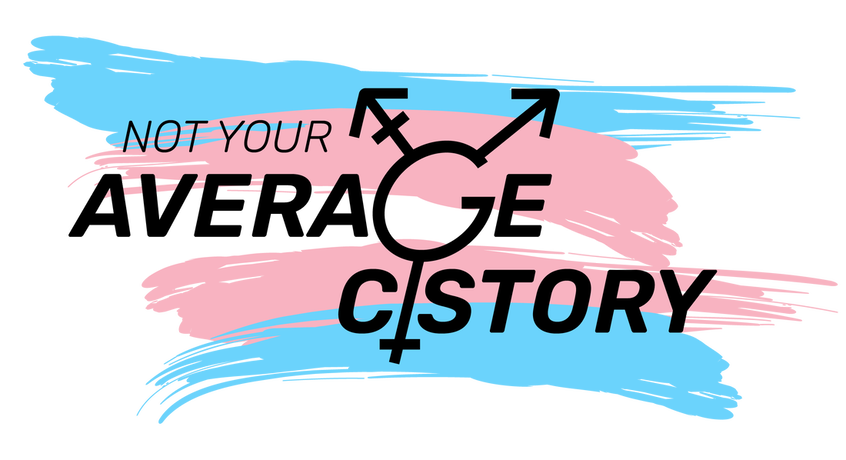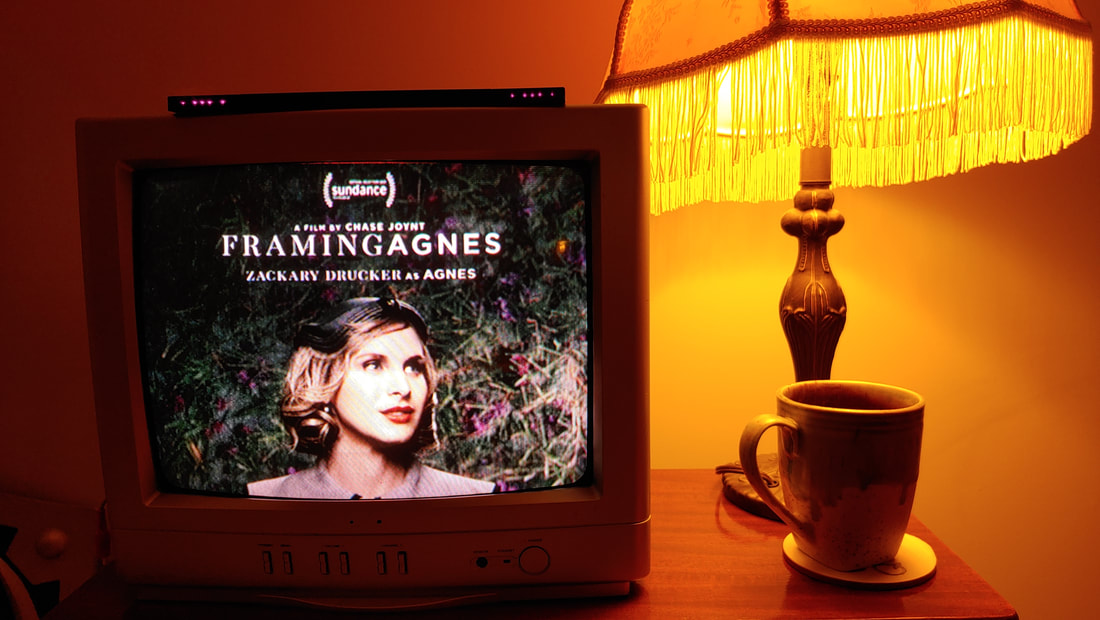|
In the lead up to the premiere of Framing Agnes, I sought out interviews and panels for the film, thinking it might be interesting to discuss on my website. I was already excited to watch the film, but there was a sentiment that perked my interest further. Morgan M. Page, one of the writers of the documentary, mentioned that the target audience was trans people, not cisgender outsiders. My ears perked up immediately. I had come to the same conclusion about my trans museum studies work during my first exhibition, so I was very curious to see how the film handled this. My curiosity was further piqued when Jen Richards echoed the same sentiments in a different panel. In that one, Richards compared Framing Agnes to the far more straight forward Disclosure, with Agnes being much more for trans people. By the time the premiere came around, my anticipation was heightened. I am excited to say that it lived up to that high bar. Much like the previous documentary I have discussed on my website, Nuts!, Framing Agnes is not a traditional film. The film centres around Agnes, a trans woman in Los Angeles in the 1950s who would become the focus of Dr. Harold Garfinkel’s writings on trans people. At the time, Garfinkel was conducting a study of trans people with UCLA, and through it, Agnes was able to acquire gender confirming surgery. Around 10 years after the publication of the study, Agnes announced that what she had told to Dr. Garfinkel was all untrue, told only in order to get access to the surgeries and procedures that were gatekept from her. This launched her into infamy as a trans person who managed to beat the system. As you might imagine, trans communities and the fledgling trans medical world both looked upon this deception in very different ways. While conducting research for the film, the filmmakers found themselves in Garfinkel’s archive. Digging through the paper work, they managed to uncover previously unseen testimonials from a collection of other trans people interviewed for the study. Through a fascinating blend of traditional documentary style talking head segments with trans people and dramatized recreations of the study, presented as though they were on the Mike Wallace Show. It works surprisingly well, switching between the transcripts from the study to the trans actors playing the participants. The dramatized recreations bring a new life to their voices and a subtlety that would have been lost in just a straight retelling. As with many great films, Framing Agnes is not just about Agnes. Instead, the filmmakers use her as a jumping off point to discuss the ways that trans people have been perceived in society. Agnes offers a perfect jumping off point to discuss trans narratives as her story coincides with the period where trans people were just starting to get attention; Christine Jorgensen had come out a few years before, Roberta Cowell was not far behind her, and the 1960s had not even started yet. It was a new era of trans life. Garfinkel was about to become the “expert” on trans people. And yet, even at this point, the trans people being interviewed are showing the exact same disdain and sarcasm towards the invasive and demeaning questions as trans people do today. These questions, around “the surgery” or “coming out”, reveal an unfamiliarity with the subject matter, garnering a careful mockery from trans participants, both in 2022 as in the 1950s. The obvious comparison for Framing Agnes is the Netflix distributed Disclosure, released in 2020. They both cross over the same moments, Christine Jorgensen, Carmen Carrera and Laverne Cox on Katie Couric, but they approach them very differently. Disclosure is a more traditional documentary, focused on imparting knowledge to an unfamiliar audience. Framing Agnes wants to challenge the format. One of the key ways it does this is by making its target audience other trans people, rather than imagining how a cisgender audience would respond. This is revolutionary.
This produced a documentary that wants to bring you along, but not interested in holding your hand. There are plenty of layers to the film and the film expects you to follow along. It is not interested in setting up the narrative points and discussions that are already incredibly familiar to trans viewers for the sake of cisgender ones. Its audience is the trans people who have had to deal with gatekeepers and institutions in order to just simply exist. From that point, the really interesting conversations can take place.
Multiple times while watching, I had to pause the film in shock at a line that was said and just let it sink in. These are single lines that carried so much weight to them that they could not just pass by. I will try to break a few of them down here, to give an idea of how dense the film can be. A core theme of the film is visibility. Agnes was visible through the study, but the other participants were not. During one interview with the actor Max Wolf Valerio, who plays the role of older trans man Henry, Valerio says that not everyone in his life knows he is trans. This is an incredibly powerful statement to the nuances of visibility and being out. Valerio has been a somewhat prominent figure within transgender circles since his transition in 1989, being placed alongside Jamison Green in Susan Stryker’s iconic book Transgender History as a new crop of transgender activists (Stryker, 185). He is a name that trans people will have come across before, if they were interested in learning about the previous generation. And here, in this film, the trans elder, who has been visible for decades, has been centred in documentaries since the 90s and has had his memoir published, he has people in his life that do not know. It speaks monumentally to the nuances of “being out” that so often go undiscussed. It is a striking moment in the film, spoken in only a couple of sentences, but carry so much meaning to an audience that is already familiar to the subject matter. Another example comes later on in the film when it introduces the trans teen Jimmy, played by Stephen Ira. In the transcripts for the interview, Garfinkel asks Jimmy a question about “the surgery”, as all trans people are bound to be asked at some point in their life. In possibly the best line of the film, Jimmy responds rather dismissively, stating “I had my tonsils out. I don’t see how that is any different.” My jaw was on the floor when I heard that. In the decades following Garfinkel’s study, “the surgery” has come to dominate discussions around trans life. It was central to navigating trans life. Getting through gender clinics required surgery at the end. Surgery was required to change legal documents, in some places even to today. Surgery has become the focal point of transgender narratives, with it being the point where everything changes. The medical institutions have foisted this upon trans people, forcing them to jump through hoop after hoop in order to get to it, placing surgery on a pedestal that is just out of reach from trans people on their own. The film brilliantly lampoons this whole mentality, derisively comparing it to tonsils, a routine surgery that many children get. It is just another procedure, necessary to live one’s best life. It is not some zenith of trans life, but just another part of it. Not the end of the journey as so often portrayed, but just another stop along the way. The fact this nugget of wisdom is spoken by a trans teen is equally powerful considering the current battleground that is trans youth medical care. Trans kids all over, but especially in Republican states and in the United Kingdom, have their access to healthcare threatened by lawmakers under claims that they cannot consent to puberty blockers and hormones. Even as far back as 60 years ago, we find this consent in an incredibly prescient way. And all of this meaning, packed into two short sentences. These are just two small examples of the film’s use of a transgender audience. It does so much with its content. It wants cisgender audiences to come along, but is not afraid if they do not catch everything that it puts out there. I think this is at the heart of some of the negative reviews the film has been receiving. Cisgender audiences find the story of Agnes interesting, a solitary trans woman who beat the system in a time before trans visibility. They were not expecting instead to quarrel with the lasting legacy of the gender clinics and medicalization of transgender lives, nor were they anticipating a meditation on the value of being invisible. The film was not concerned with what cisgender audiences wanted out of a documentary like this, and so some felt alienated. It is a common feeling that discussing issues around gender and the nuances that surround gender are far more enlightening when two trans people are discussing it among themselves rather than having to discuss it with cisgender interlocutors. There is a familiarity that acts as a jumping off point to more in depth conversations. With Framing Agnes, we have something that is created with that mentality in mind. It brings it to the forefront. It is a revolutionary way of telling trans stories in a seemingly unrevolutionary way; let trans people tell them. When the film ended, I found myself getting emotional. I could not help but cry. Watching the film, even in an analytic mindset for this blog post, I was overwhelmed by emotions. It felt like I had finally found something that was not just speaking about me, but speaking to me as well. Framing Agnes does a truly incredible job at breaking down the narratives we have come to expect around transgender life, told from a transgender perspective, that wants to challenge you. This is just one reading of the film, focused primarily on the use of a transgender target audiences. There are many more themes to unravel in it. It is a film that deserves multiple viewings in order to truly get the most out of it. I hope my readers will get a chance to view the film themselves. Works Cited Film Fatales. "Framing Agnes: Building a Trans Inclusive Team." Recorded January 21, 2022. Video. https://vimeo.com/ondemand/filmfatales/668831112. Stryker, Susan. Transgender History: The Roots of Today's Revolution. New York: Seal Press, 2017.
1 Comment
Anik
3/3/2022 08:25:26 am
Congrats Amelia! Another beautifully written post.
Reply
Leave a Reply. |
Amelia smithTrying to bridge the gap between transgender studies and museum studies. Archives
July 2023
Categories
All
|


 RSS Feed
RSS Feed